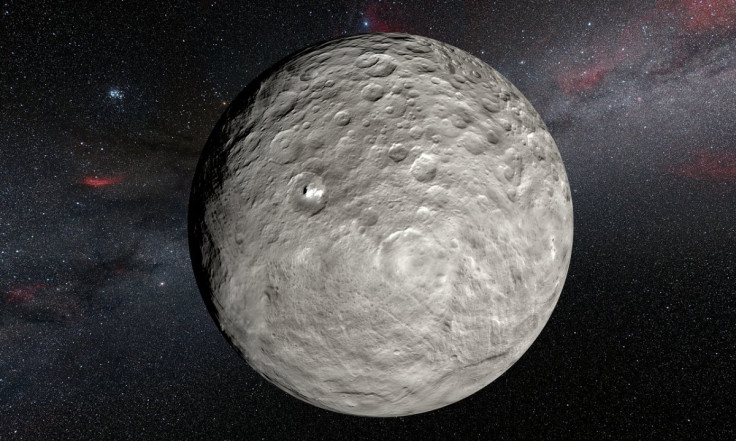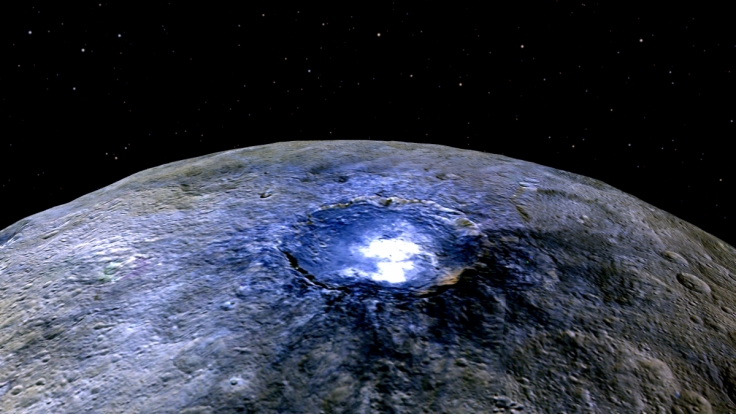Ceres bright spots: Unexpected variations suggests mystery features are volatile

More details about the mystery bright spots on Ceres have been uncovered, with latest observations suggesting the material is volatile and evaporates in sunlight. Scientists unexpectedly saw the spots changing, brightening and fading over the course of the day.
Ceres bright spots have baffled scientists since they were first discovered last year with Nasa's Dawn spacecraft. So far, 130 bright spots have been identified. These areas reflect far more light than their surroundings, but what they were remained a mystery.
A number of theories about what these features could be emerged, with the most popular being that they are composed of hydrated magnesium sulphates. However, scientists from the INAF-Trieste Astronomical Observatory in Italy say there might be more to the bright spots than first thought.
Paolo Molaro and colleagues used the HARPS spectrograph at the European Southern Observatory in Chile to observe Ceres' brightest spot – found in the crater Occator – for two nights in July and August last year. They noticed the spots becoming brighter and dimmer over the course of the day and that there were changes not related to the spin of the dwarf planet. Findings were published in the Monthly Notices of the Royal Astronomical Society.

Molaro told IBTimes UK: "The bright spots were an absolute surprise. Anyone would have expected to find an almost completely dark body just bigger than the asteroids but not much different. And now these spots show signs that there is some activity going on, on a short temporal scale. This is very surprising for an isolated body far from gravitational interactions with other planets."
Researchers believe the changes to the brightness of the spots could be due to the presence of volatile substances that evaporate in sunlight. When facing the sun, these spots form plumes that reflect sunlight very well. They evaporate quickly and then lose reflectivity.
Molaro said they do not know what the material is, but added: "The most simpler material could be water vapour and/or ice but more complicated ones are not excluded. For this we rely on the Dawn images and results. We know also that Ceres has a lot of water in the interior. But strictly speaking what we measure is just a change in the reflectivity of that area.
"If think that it is up to the Dawn mission to reveal the ultimate nature of the bright spots. From our side we will hopefully be able to repeat our measurements and refine our technique."
© Copyright IBTimes 2025. All rights reserved.






















